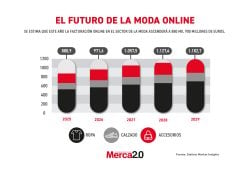-
According to PQ Media’s forecast, DOOH advertising is projected to account for over one-third (36.5 percent) of total outdoor advertising revenue by 2026, while traditional and ambient OOH will represent the remaining 63.5 percent.
-
Statista predicts that global investment in OOH advertising will reach $38.41 billion dollars in 2023.
In the dynamic world of advertising, businesses are constantly seeking effective ways to connect with audiences beyond the confines of their homes. Out of Home (OOH), Digital Out of Home (DOOH), and Mobile Out of Home (MOOH) are three prominent billboard advertising methods designed to engage consumers in various locations.
By understanding the differences between these methods, businesses can make informed decisions about their advertising strategies. In this article, we delve into the characteristics and advantages of OOH, DOOH, and MOOH, and explore their growing significance in the advertising industry.
OOH Advertising: Traditional and Timeless
OOH advertising has a rich history that spans over a century and encompasses billboards, bus stops, and posters. Despite the advent of digital advertising, OOH remains relevant due to its unskippable nature, reaching large volumes of people in specific locations. With its widespread visibility, OOH is an effective tool for building brand awareness and delivering impactful messages to diverse audiences. As demonstrated by its continued success, OOH advertising plays a crucial role in the marketing mix.
DOOH Advertising: Embracing Digital Innovation
Digital Out of Home (DOOH) represents a more recent evolution of OOH advertising, utilizing digital technology to display ads. This dynamic approach includes digital billboards, screens, and mall kiosks, among other digital platforms. Unlike traditional OOH, DOOH offers enhanced interactivity and creativity. Advertisers can leverage videos, interactive ads, and QR codes to provide engaging and immersive experiences for consumers. With real-time adaptability and precise targeting capabilities, DOOH enables businesses to deliver tailored messages to specific demographics, resulting in greater impact and engagement.
MOOH Advertising: Mobilizing Audiences
Mobile Out of Home (MOOH) is an advertising method that capitalizes on the power of mobile devices to reach consumers. This approach encompasses mobile billboards, truckside advertising, and wrapped vehicles, leveraging the mobility and ubiquity of smartphones and tablets. MOOH provides highly targeted advertising, enabling businesses to reach specific audiences in precise locations. By harnessing geolocation and demographic data, brands can deliver personalized messages to specific consumer segments, maximizing the effectiveness of their campaigns. With its ability to capture attention on the go, MOOH is a powerful tool for reaching consumers in today’s mobile-centric world.
Industry Projections
According to PQ Media, DOOH is expected to represent over one-third (36.5 percent) of total out-of-home advertising revenue by 2026, with traditional and ambient OOH accounting for the remaining 63.5 percent. Statista predicts that global investment in OOH advertising will reach $38.41 billion in 2023. In Mexico, it is projected that media investment in OOH will reach $316.8 million pesos in 2023.
By understanding the distinctions between these methods, businesses can tailor their advertising strategies to effectively connect with their desired audiences in the evolving advertising landscape. Embracing the power of OOH, DOOH, and MOOH advertising can help businesses achieve their marketing objectives and maximize their impact in the dynamic world of outdoor advertising.
MUST Read Articles:
-
Trump Slams Bud Light and Sparks Controversy: A Closer Look at the Boycott Movement
-
High School Student Pepper Sprays Teacher Over Phone Confiscation, Is It Justified
-
From TikTok Sensation to In-Flight Controversy: The Unethical Life Hack that Has Everyone Talking
-
Mastering Common Conflict Management Strategies: Resolving Conflicts with Finesse










